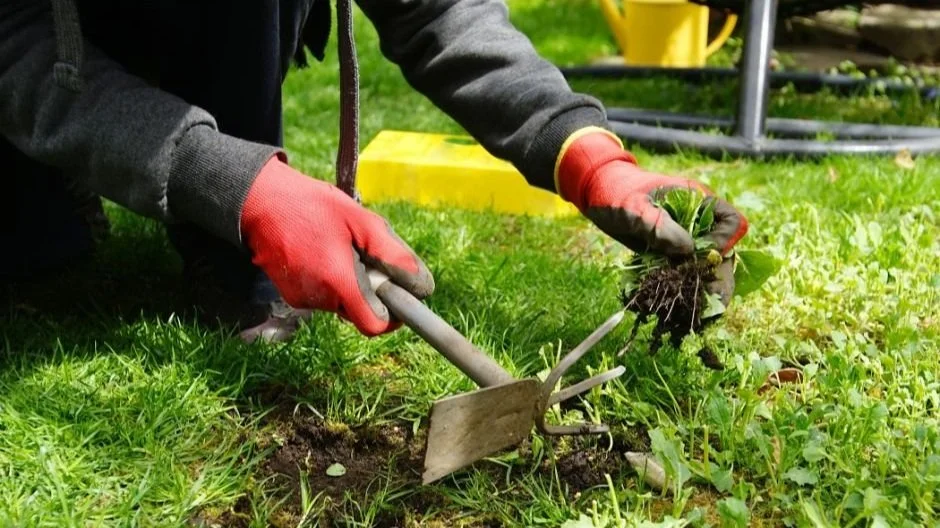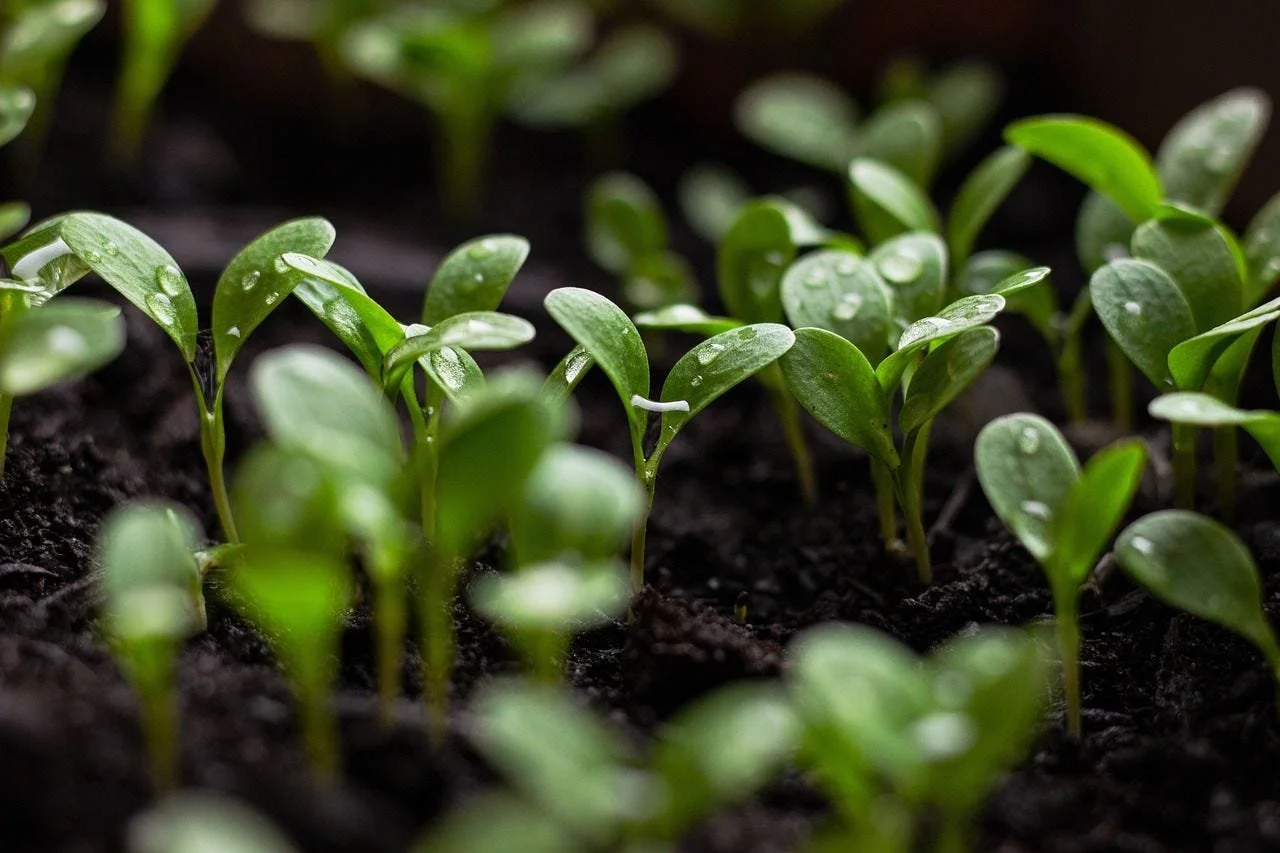Awakening Nature
Spring Gardening Tips for a Thriving Landscape
Discover > Grow Your Own Food > Awakening Nature
Embracing the Season of Growth and Blooming Potential
Spring gardening is a time of renewed energy and excitement as nature awakens from its winter slumber. The arrival of early spring brings the promise of new growth, vibrant colors, and the opportunity to create a flourishing garden. Whether you are an experienced gardener or just starting out, this season offers a multitude of possibilities to explore. From the allure of ornamental grasses to the delight of spring plants and the abundance of a vegetable garden, spring gardening invites us to connect with nature and witness the magic of transformation. In this guide, we will delve into various aspects of spring gardening, providing tips and insights to help you make the most of this enchanting time.
Setting the Stage for a Flourishing Garden
As the seasons change, it's time to prepare your garden for new plants and embrace the exciting spring growth. Discover essential tips for early spring preparations that will set the stage for a garden filled with vibrant life.
Evaluating and Preparing Garden Beds
As early spring arrives, it is crucial to assess the condition of your garden beds. Begin by removing any debris or dead plant material that may have accumulated over the winter. Take a close look at the soil, checking for signs of compaction or nutrient deficiency. If the soil feels heavy or waterlogged, it may benefit from additional drainage or raised bed construction. Consider conducting a soil test to determine its pH level and nutrient composition. This information will guide you in making the necessary amendments to optimize your garden's fertility.
Composting and Amending for Optimal Growth
One of the cornerstones of successful spring gardening is healthy soil. Enhancing soil fertility and structure is imperative for supporting plant growth and vitality. Composting is a fantastic way to recycle kitchen scraps, yard waste, and other organic materials into nutrient-rich humus. Begin a compost pile or turn your existing one, properly balancing green (nitrogen-rich) and brown (carbon-rich) materials. As the compost decomposes, it will enrich the soil with key nutrients and improve its overall structure.
In addition to composting, consider incorporating organic matter into the soil. Well-rotted manure, leaf mold, or aged garden compost can be mixed into the top few inches of the soil. This process helps improve its texture, drainage, and nutrient-holding capacity. Furthermore, organic matter acts as a reservoir for beneficial microorganisms that contribute to a healthy soil ecosystem.
Pruning Shrubs and Encouraging Healthy Growth
Early spring is an opportune time to prune shrubs before they start their vigorous growth. Pruning helps maintain the shape and size of the shrubs, promotes airflow, and stimulates new growth. Begin by removing any dead, damaged, or crossing branches. Make clean cuts just above a bud or lateral branch junction, ensuring a slight angle to allow water to run off. Pruning also allows you to thin out the shrub, reducing overcrowding and improving sunlight penetration. Remember to research specific pruning techniques for different shrub species, as some may have specific requirements.
Spring's Versatile Landscaping Element
Immerse yourself in the captivating allure of ornamental grasses and witness their role as a versatile landscaping element during the season of spring growth. Explore the beauty and potential of these graceful plants that add texture and movement to your garden beds.
Incorporating Ornamental Grasses
Ornamental grasses add texture, movement, and visual interest to the spring garden. With their graceful blades and elegant seed heads, they provide a unique charm that complements a variety of garden styles. When selecting ornamental grasses, consider factors such as height, color, and hardiness. Taller varieties, such as Miscanthus or Panicum, can create striking focal points, while shorter grasses, like Festuca or Hakonechloa are ideal for border edging or container gardens. Mix different species and cultivars to create dynamic combinations of colors, textures, and growth habits.
To incorporate ornamental grasses effectively, consider their placement in the garden. They can serve as standalone features, be grouped together to form a naturalistic meadow, or be used as a backdrop to highlight other plants. Plant them in well-drained soil and provide adequate sunlight based on the specific requirements of each grass variety.
Maintenance and Division Tips
Ornamental grasses are relatively low-maintenance plants, but they still require some care to thrive. Regular watering is vital during their establishment phase, but once established, most grasses are quite drought-tolerant. Avoid overwatering, as excessive moisture can lead to root rot or floppy growth.
It is an excellent time to divide larger clumps of ornamental grasses in late winter or early spring before new growth emerges. Dividing helps rejuvenate the plants, maintain their vigor, and prevent overcrowding. Carefully lift the clump and use a sharp knife or shovel to divide it into smaller sections, ensuring each division has sufficient roots and foliage. Replant the divisions at the same depth as before, spacing them appropriately to allow for future growth.
Discovering a Vibrant Array of Spring-Flowering Plants
Delve into the world of spring planting and uncover a delightful array of plants that burst into colorful blooms during spring growth. From bulbs to perennials and annuals, embrace the opportunity to create a vibrant and flourishing garden with these spring-flowering beauties.
Unveiling the Diversity of Spring Plants
Spring brings an array of plant choices, from the elegance of flowering bulbs to the reliability of perennials and the seasonality of annuals. Bulbs, such as tulips, daffodils, and hyacinths, are a classic choice for vibrant spring blooms. They are typically planted in the fall but can still be planted early in spring for later flowering. Perennials, on the other hand, are plants that return year after year, providing a reliable source of color and foliage. Choose perennials that are well-suited to your climate and light conditions. Annuals, which complete their lifecycle within a year, offer endless possibilities for seasonal bursts of color. Consider planting cool-season annuals like pansies and snapdragons for early spring displays.
Nurturing New Growth
When planting spring-blooming bulbs, timing is critical. Aim to plant them in early spring before the soil warms up too much and while there is still enough time for them to establish their root systems. Prepare the soil by loosening it and incorporating organic matter to enhance drainage and nutrient availability. Follow the specific planting depth and spacing recommendations for each type of bulb. Generally, bulbs are planted two to three times their own height deep, with the pointed end facing upward.
After planting, provide a thorough watering to settle the soil around the bulbs. As new growth emerges, monitor the moisture levels and water when necessary, especially during dry spells. Apply a layer of mulch to conserve moisture and suppress weed growth. Once the flowers fade, allow the foliage to yellow and wither naturally. This process allows the bulbs to store energy for the following year's growth. Avoid cutting back the foliage prematurely.
Maximizing the Growing Season
Make the most of the spring growing season with tips and strategies for successful gardening. Learn how to optimize your efforts, maximize growth, and nurture new plants during this time of abundant spring growth.
Embracing the Growing Season
Timing is pivotal for successful spring gardening. Begin by identifying your local frost dates to determine when it is safe to plant sensitive crops and tender annuals. Use this information as a guide to plan your garden activities. Start seeds indoors for plants that require a longer growing season or direct sow seeds (how long do seeds last?) for those that tolerate cooler temperatures. Consider using a gardening calendar or journal to track planting dates, expected harvest times, and any specific care requirements for different plants.
Tasks for a Bountiful and Beautiful Garden
To ensure a productive and aesthetically pleasing garden, create a spring gardening checklist. This checklist may include tasks such as:
Clearing and preparing garden beds: Remove weeds, debris, and spent plants from the previous season. Amend the soil with compost or organic matter as needed.
Testing and adjusting soil pH and nutrient levels: Conduct a soil test to determine if any amendments are necessary to optimize plant growth.
Starting seeds indoors: Sow seeds for vegetables, herbs, and flowers that require an early start. Provide adequate light, temperature, and moisture for successful germination.
Transplanting seedlings: Harden off seedlings by gradually exposing them to outdoor conditions before transplanting them into the garden.
Pruning and shaping shrubs: Remove dead, damaged, or crossing branches from shrubs to promote healthy growth and maintain their desired form.
Fertilizing: Apply balanced organic fertilizer or compost to provide necessary nutrients for vigorous plant growth.
Monitoring pests and diseases: Regularly inspect plants for signs of pests or diseases and take appropriate measures to prevent or control them.
Cultivating Abundance
Experience the joys of cultivating abundance in your own backyard through spring vegetable gardening. Discover the pleasures of growing fresh produce, nurturing new plants, and savoring the flavors of the season while enjoying spring growth in your vegetable garden.
Soil Preparation and Crop Selection
A successful spring vegetable garden starts with proper soil preparation. Ensure the soil is well-drained, rich in organic matter, and has a balanced pH level. Clear any weeds or debris, loosen the soil, and incorporate compost or well-rotted manure to improve its fertility.
When selecting vegetable crops, consider your local climate and the specific requirements of each plant. Cool-season vegetables like lettuce, spinach, radishes, and peas thrive in the cooler temperatures of early spring. Choose suitable varieties for your region and consider succession planting to extend the harvest season.
Planting and Maintaining a Productive Vegetable Garden
When planting vegetable seeds or transplants, follow the spacing and planting depth guidelines provided for each crop. Water the newly planted vegetables thoroughly and continue to provide regular irrigation to ensure even soil moisture. Mulch around the plants to suppress weeds, conserve moisture, and maintain consistent soil temperature.
Regularly monitor your vegetable garden for pests and diseases. Identify and address any issues promptly to prevent them from spreading. Implement organic pest control methods such as handpicking pests, using insecticidal soaps or natural predators, and practicing crop rotation to minimize disease pressure.
Revel in the Beauty and Bounty of Your Flourishing Garden
Spring gardening is a journey of growth, discovery, and connection with nature. By evaluating and preparing garden beds, nurturing the soil, exploring the beauty of ornamental grasses, and embracing the diverse array of spring-flowering plants, you can create a garden that delights the senses and brings joy to your life.
Remember to follow essential spring gardening tips, maximize the growing season through proper timing and planning, and cultivate an abundant vegetable garden. As you revel in the beauty and bounty of your flourishing garden, take a moment to appreciate the wonders of spring and the transformative power of nature.





